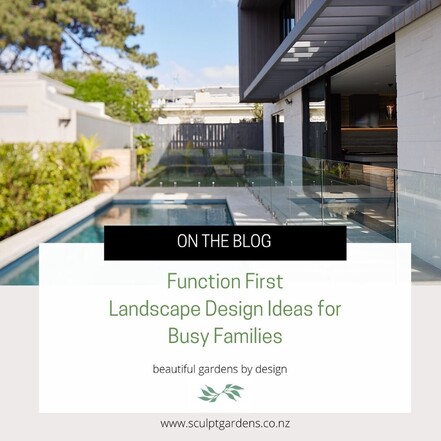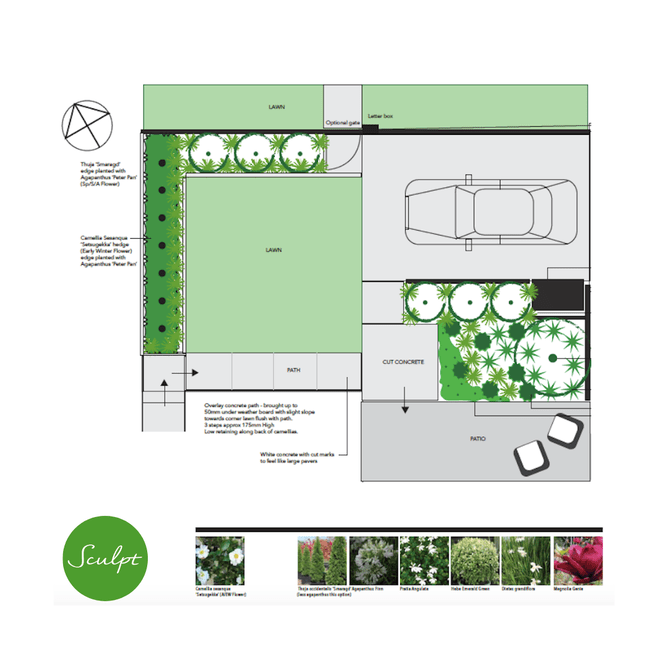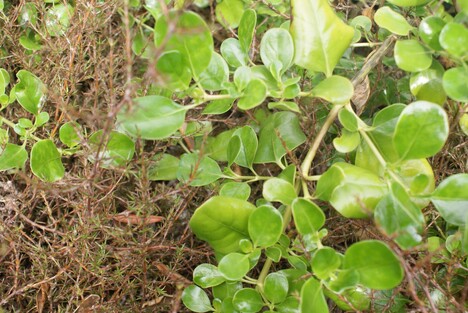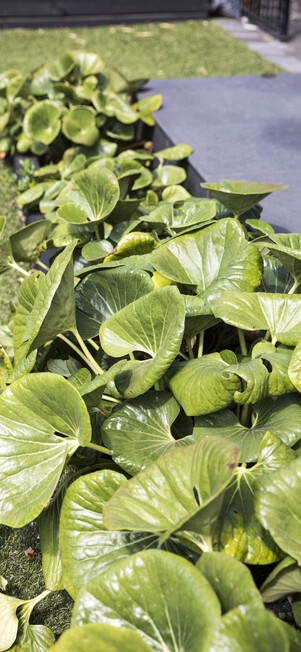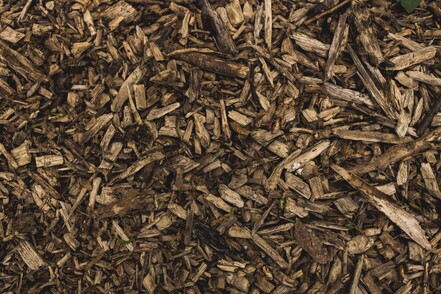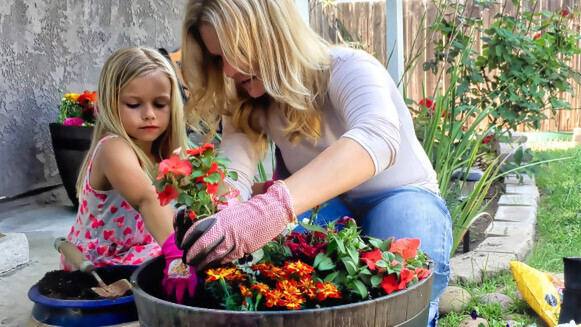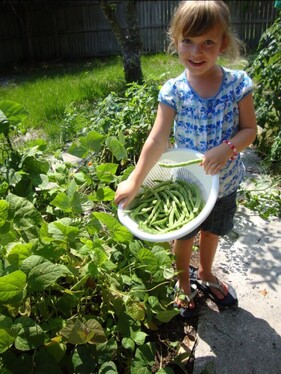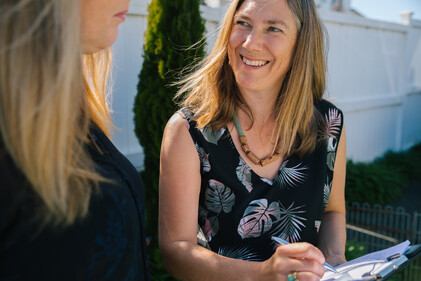Want to create your very own beautiful garden at home, but worried you don’t have the time?
With all that comes with family life, it can seem that there’s always too much to do, and never enough time – and certainly not for pulling weeds. Having a garden at home doesn’t mean that you have to devote all of your precious spare time to it.
By choosing a low-maintenance design that is suited to your backyard, you can have the green space
of your dreams and still have time for the important things.
Read on for Sculpt’s tips on planning a landscape design that is low maintenance AND works for you and your family.
Turn your Auckland garden into a functional landscape, designed to work for you and your family.
1 / Know Your Patch of Dirt
The first and most important step in creating a garden suited to your lifestyle is understanding your
backyard.
Plants grow better when they are in their ideal growing conditions, so spend a few days watching
how your garden changes throughout the day. Some areas will receive morning sun, and others
afternoon, while other spots will be shady or scorching hot the entire day.
Take notice of patterns as the seasons change too. Downhill areas are swamped during winter floods or see less sunlight due to the sun being higher in the sky. You may have a strong sea breeze that tunnels through one end of the house, while the other side is always still.
TOP TIP: Create a visual weather map and separate regions based on sunlight, dampness and wind shelter.
When plants are placed in the right spot, you won’t need to do much to keep them happy and
growing. However, if placed in the wrong conditions, plants are weaker, grow less quickly, and
become susceptible to pests and disease. These conditions create more work for you to keep your
plants healthy.
2 / Seeing Structure
The structure of your backyard will play a huge role in the maintenance required. The more green space you have, the more work you’ll need to do to maintain it.
Consider what kind of garden your family needs.
- A garden bed filling the entirety of your backyard
- Pockets of plants placed in feature areas or alongside fences and buildings
- A lawn
effort and time. It’s important to have a green area for children to play. However, if you don’t have a
dog, you may not need acres of lawn.
Instead, utilise the following to fill space.
- Decking
- Pathways
- Entertaining areas
3 / Picking Plants
Choosing the right plants for the job is crucial to creating an easy-care garden. Finding the perfect
plants for Auckland’s environmental conditions that match the time you have to put into them can
be challenging!
Spend less time gardening, more time enjoying it!
If you want to spend more time enjoying your landscape design opt for low-maintenance plants.
Keep these factors in mind when choosing your plants:
1. Evergreen plants with year-round foliage will reduce the amount of leaf litter needing to be picked up.
2. Rows and rows of hedges are relatively easy to keep straight but require a lot of time spent hedge trimming and collecting green waste.
3. Plants that need frequent pruning, such as roses, not only take a lot of time but also require the right knowledge to keep them looking healthy.
There are plenty of options that not only easy to maintain but look great too. If your garden is sunny
and watering is a hassle, consider a well-designed succulent or cactus garden, as these plants will
thrive on next to no effort.
Native Planting in your garden
Natives, being adapted to the conditions of our weather and soil, are going to be the best plants for
any garden in New Zealand.
Next time you are out in the bush or forest in your area, have a look at the types of plants growing
there. Each region has a differing climate, but in general, most NZ species tend to be adaptable.
Native plants that work well in Auckland family gardens.
● Flaxes, ferns, hebe and grasses make great fillers and understorey.
● Hebe diosmifolia doubles as a self-cleaning shrub. It drops its flowers once finished and
requires no deadheading.
● Native Pratia (Libertia) angulata comes in blue and white varieties which are pretty and
petite ground cover for that English cottage-type feel.
● Pittosporum balls are hardy and a great way to add structure to your garden, while larger
shrubs such as Pseudopanax and Griselinia can add lush greens and dense foliage.
● Taller plants such as Kōwhai, punga and nīkau create canopy layers and interest.
The more plants you have, the less room there is for weeds!
When planning your garden design, consider dense, mass planting of a few attractive species.
Great filler plants include:
- Grasses and flaxes
- Clivia
- The native renga renga
- Miniature agapanthus (the large variety is considered a weed in New Zealand) produce
colourful flowers while taking up space
Sweeping flows of colour against bold greens are eye-catching and beautiful. The best part is they
require little effort to look the part.
4 / Ground Control
Although we say it time and time again, it can never be said enough – mulch is the key to low-maintenance success in any garden.
Mulch reduces water evaporation, meaning your gardens need to be watered less. It creates a layer
of healthy decomposing organic matter, so your plants get more nutrients to grow, and soil condition improves (and healthier plants = less work on pest control). Soil erodes less quickly, and if
that isn’t enough, 10cm of mulch will help suppress weeds so that you don’t have to spend hours
pulling them out.
When installing your garden, it’s wise to consider including irrigation. Turning a tap on and off is
much quicker than watering each plant with the hose.
In terms of colour, brown mulch is much easier to keep looking good than black mulch. Black does
look striking, but any leaves or petals that drop onto it will stand out as either green or brown and
look out of place and messy if left to build up. Black mulch will also fade naturally in the sun, so top-
ups may be required more frequently than with brown mulch.
5 / Make Garden Time Family Time
The easiest way to keep a garden looking beautiful with a busy family life is to get
everyone involved.
In a world that is becoming increasingly tech-focused, teaching children about gardening gives them a chance to engage with nature. It also gives you an extra pair of hands!
Vegetables and fruits are fun to grow and to watch the progress from soil to table. A favourite
childhood memory of mine is wandering through mum’s veggie patch looking for strawberries.
Older children can be taught to pick flowers to put in vases. Having everyone outside with you,
whether to help or to be moral support while playing with pets on the lawn, makes gardening more
enjoyable and a hobby, rather than a chore.
6 / Ask the experts for help with landscape design
If the thought of designing or maintaining your backyard is a little overwhelming, it might be time to talk to your local landscape gardeners.
If you’re stuck for ideas, investing in a plan can help to ensure you have the right plants for your
particular area - plans that are suited to your time and energy investments in gardening.
If it’s the maintenance that scares you, hiring help for as little as a few hours a month may be all that
is needed to keep on top of things and prevent your garden from turning into a jungle. Small
amounts of regular maintenance result in less work and are much less daunting than an annual tidy.
Sculpt Gardens has created many gardens suited to family life, and if you have any questions at all, we’d love to help.
